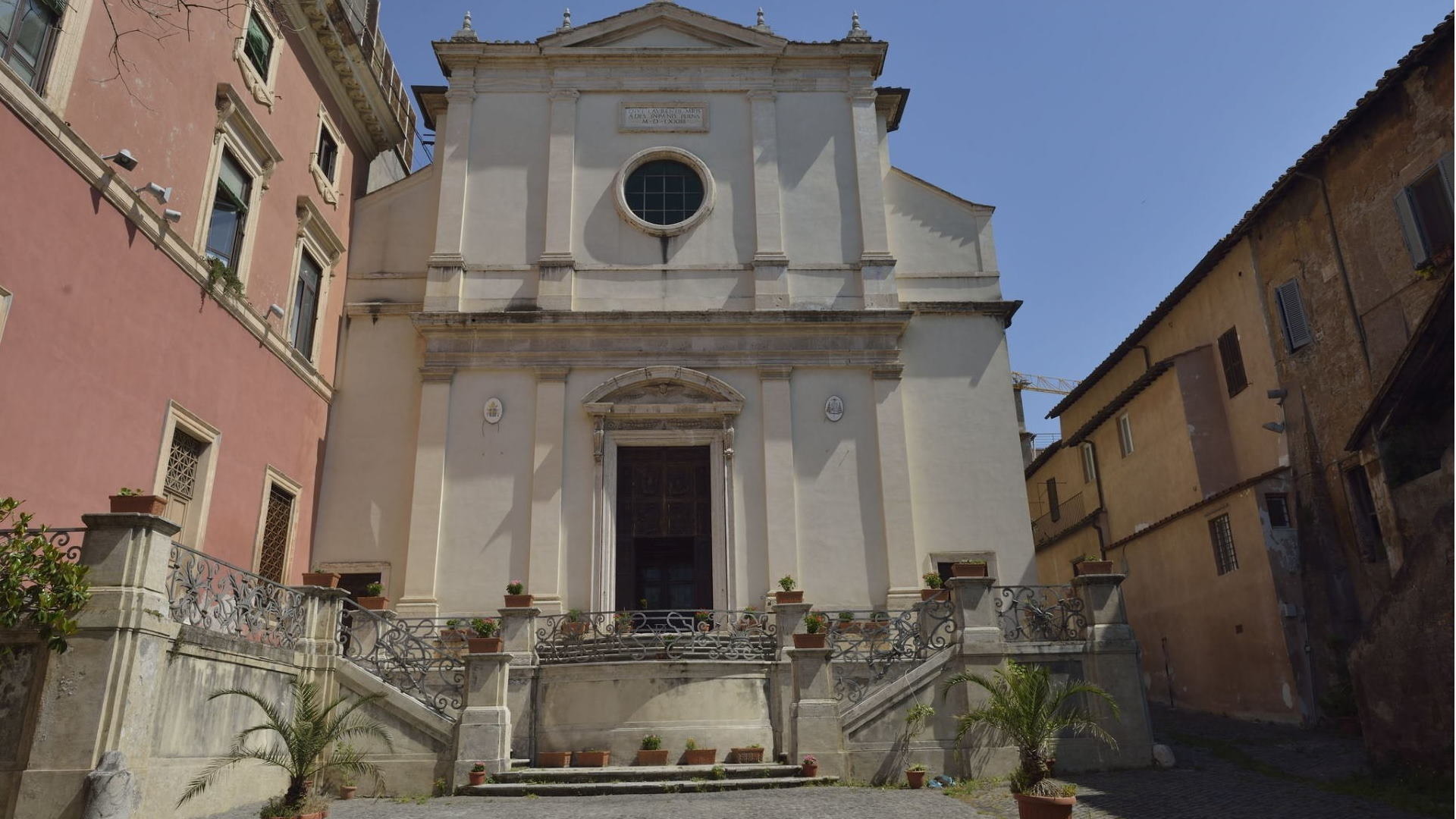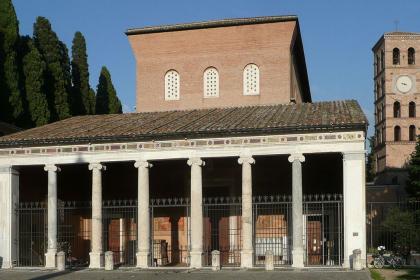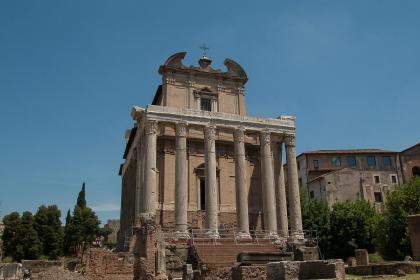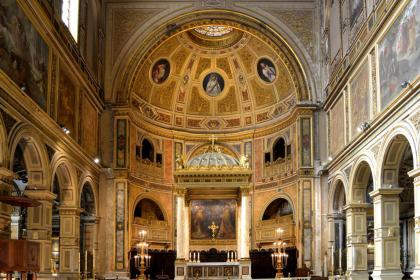
We know very little about the life of St Lawrence, martyred in Rome on 10 August 258: sources indicate him as archdeacon of Pope Sixtus II, charged among other things with administering the temporal goods of the church, which he gave away to the poor shortly before being arrested. It is his death that consigns him to legend: an ancient “passion” recounts that he was roasted alive on a gridiron, a torture that inspired works of art, texts of piety and popular sayings for a long time to come. In Rome, where he was one of the most beloved saints, more than thirty were the church dedicated to him over the centuries. Of the seven still extant, one is precisely San Lorenzo in Panisperna: tradition claims it was built during the reign of Emperor Constantine, just 100 years after the persecutions ordered by Emperor Valerian, on the exact spot of the deacon’s martyrdom.
The first clear reference to the church, however, is in the Liber Pontificalis, where it is listed as one of the churches that Pope Adrian I restored in the 8th century. The original name was San Lorenzo in Formosa, perhaps in connection with Pope Formosus. Only later did it begin to be called “in Panisperna”, and it was from the church and the adjoining monastery, that the street (opened only in the 16th century) that crosses the Rione Monti with a scenic up and down, arriving behind the Basilica of Santa Maria Maggiore, took its name. As for the etymology of the term Panisperna, there is no certainty. It could derive from “palis” (iron bars) and “sterno” (to stretch), in reference to the saint’s martyrdom; from the Greek word “para” (near) and that derived from the ancient Latin “sperno” (border), indicating that the church was near a boundary between two properties; or again, and this is the most suggestive but most likely fanciful theory, from “panis et perna”, the bread and ham that the monastery would distribute to the poor every 10 August.
What is certain, however, is that the church and monastery that grew up around the it witnessed a long and fascinating history that, with ups and downs, was intertwined with that of the city until the 19th century, and in some ways even after. From the 9th to the 13th century, the monastic complex was occupied by Benedictine monks. In 1308, Cardinal Giacomo Colonna acquired it from the canons of the Lateran Chapter, renovating it at his own expense and handing it over to a community of Poor Clares. The monastery thus became one of the most important religious places in medieval Rome: the new church was given a simple single nave, and an enclosed choir behind the high altar was rebuilt. The Poor Clares took the principle of enclosure seriously, hence there was no need of a large church for liturgical events. The church was rebuilt a second time between 1565 and 1574, probably to a design by Francesco da Volterra. A restoration in 1757 finally gave the church its present appearance.
The church’s simple façade gives onto a quiet tree-lined courtyard, enclosed by a wall with a portal, connected to the street by two flights of stairs built in 1893. The interior is also simple, with a single nave and three chapels on each side. In the presbitery, a huge fresco stands out. It was painted in 1591 by Mannerist painter Pasquale Cati and depicts St Lawrence’s martyrdom according to the usual and unmistakable iconography, with the saint lying on a gridiron and surrounded by his torturers. By contrast, the 18th-century fresco that serves as a counterpoint to it on the vault, with St Lawrence in Glory, is the work of the Roman painter Antonio Bicchierai. In one the chapels, the body of one of the greatest saints of the Roman Middle Ages was buried for a very short time, before being transported to Sweden: St. Brigid, who, having arrived in Rome for the jubilee of 1350, loved to pray in front of the large wooden crucifix placed on the left side of the presbytery and, out of humility, used to beg for alms near the monastery. Finally, in the basement of the church is preserved the “oven” with the gridiron on which Lorenzo was supposedly killed.
A few years after the Breach of Porta Pia and the unification of Italy, the monastic complex was expropriated and forfeited to the state property. In the early 20th century, the “Royal Institute of Physics of the University of Rome” came to life in the outer spaces of the monastery, home to what would become “the Via Panisperna boys”, including Enrico Fermi and Ettore Majorana, whose discoveries led to the nuclear reactor and the atomic bomb. Today, much of the monastery’s space and buildings, garden and cloister are part of the nearby Ministry of the Interior and cannot be visited.
Photo Viminale on Twitter
The Basilica of San Lorenzo fuori le Mura

 Condividi
Condividi
Church of San Lorenzo de' Speziali in Miranda (formerly Temple of Antoninus and Faustina)

 Condividi
Condividi
Church of San Lorenzo in Damaso

 Condividi
Condividi
Information
For the timetable of the masses and visiting conditions, please consult the contacts.
 Condividi
Condividi
Location
To find out about all accessibility services, visit the Rome accessible section.












































